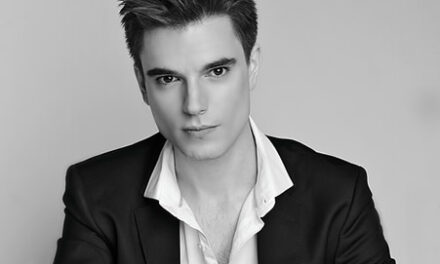Since the Baroque period, Italian composers have been known for their well-crafted, beautiful melodies and for harmonies which have offered just the right degree of musical interest without obscuring that hallmark of melodic focus. The pleasing concert of twentieth-century Italian instrumental music presented by the Chamber Orchestra of the Triangle, under the baton of Conductor and Artistic Director Lorenzo Muti, clearly revealed that the melodic richness of Italian music has never lost its appeal, either for composers or audiences.
The brilliant melodic content of the chamber music of the five composers on this program — Ermanno Wolf-Ferrari (1876-1948), Ferruccio Busoni (1866-1924), Afredo Casella (1883-1947), Arrigo Pedrollo (1878-1964), and Nino Rota (1911-1979) — held the audience’s interest from beginning to end. In each piece the melodies were distinctly twentieth-century in shape and color, often introducing disjunct phrasing and dissonances that were just edgy enough to create interest in the listeners.
The first work on the program, Wolf-Ferrari’s Suite-concertino for bassoon, two horns and strings, Op. 16 (1933), had a pronounced melancholic melody, especially in the solo bassoon, which Christopher Ulffers played very ably. The solo melody in the Notturno, the first movement, was an exquisite, darkly beautiful legato voiced in the instrument’s naturally somber low register. In the second movement, a Strimpellata, both the soloist and the orchestra enjoyed the quick, exciting, folk melody in triple meter in which the bassoon’s brilliant playing added sparkle to the music. The Canzone, a slow triple meter piece which had the melancholic sound of a love song expressed in the solo bassoon’s melody, had strong harmonic support from the orchestra. The finale, a brilliant dance piece with lots of movement, allowed the bassoon to play clean, rapid bravura passages.
Ferruccio Busoni’s Divertimento for flute and orchestra, Op. 52 (1920, a sparkling, highly-melodic, frequently dissonant composition featuring flutist Jill Muti, provided great pleasure for orchestra players as well as the soloist and allowed her to reveal her skills, especially in the execution of rapidly-moving lines. The exciting solo flute melodies as well as the orchestral passages held the attention of the audience throughout the piece because of the players’ frequent half-step dissonances, slow, disjunct passages in melodic lines, and shifts from allegro to moderato passages in minor keys. Muti’s excellent playing and the strong orchestral support she received throughout the performance merited the appreciative response from the audience.
Alfredo Casella’s Serenata for Small Orchestra, Op. 46bis (1930) concluded the first half of the concert with a flourish. The first movement was a brilliant, rapidly moving Marcia replete with sparkling trumpet solos, sharp, clear attacks in all phrases, and light, dancing sections in which solo instruments played counter rhythms against each other. The Notturno was sharply different, with its slow, mysterious themes in the cello complemented by many dissonant harmonies. The Gavotta, a dance movement in duple meter, was pleasing, with lots of orchestral color and complicated rhythms. In sharp contrast, the andante, highly-melodic Cavatina included long, sustained legato lines and close harmonies, with the cello singing a passionate melody reminiscent of an operatic cavatina. The Finale was an exciting movement in which all sections of the orchestra participated as the music sped on to a satisfying, powerful cadence.
The two works after the intermission had quite as much to offer as the music in the first half of the concert. Arrigo Pedrollo’s Concertino for oboe and string orchestra (1960) featured the superb playing of oboe soloist Bo Newsome as well as excellent playing by all members of the orchestra. The moderato first movement was darkly romantic, with rich harmony and instrumental color sustaining the oboe melody, one of the finest passages heard in this concert. Newsome handled admirably the long lines, frequent dissonant intervals and seamless, rapidly moving runs with no difficulty. He showed his audience another side of his ability in the Canzone medieovale, with the slow, pensive passages and dark, rich tone of his solo. The third movement, an Allegro Brillante, displayed his skill in playing clear-cut, light, dance-like phrases quite in contrast to his performance in the first two movements.
The last piece on the program, Nino Rota’s Concerto for Strings (1964), was a combination of movements reminiscent of purely instrumental music as well as opera. The Preludio, the first movement, with its moderato melody expressed in the most lush playing the springs could evoke, was made up primarily of two-measure phrases. The following Scherzo, with its disjointed rhythms and quickly moving, colorful melodies, was quite unlike the Preludio. The third movement, an Aria, disclosed the lyrical singing style one would expect from such a melodic passage. However, the beautiful adagio lines were not lacking in the shifts in tempo and excitement which led to the Finale, with its relentless, passionate and driving motion taking listeners and players to the exciting ending of the piece and the concert.
All who were present at this concert were no doubt reminded, as listeners have been since the advent of the great melodic Italian school of composition, that the response it continues to evoke will remain one of the most lasting expressions of melodic beauty among those who love music.











